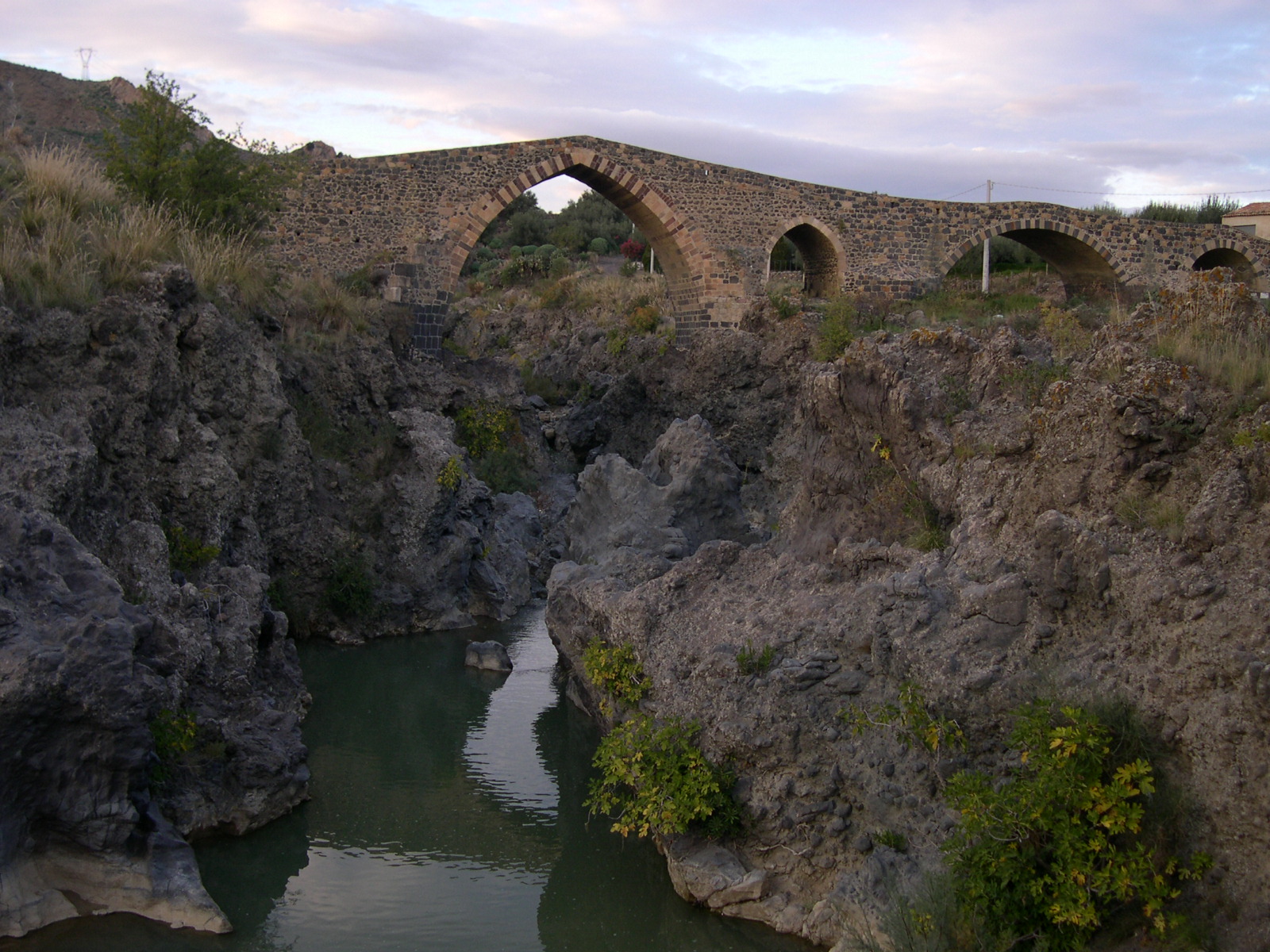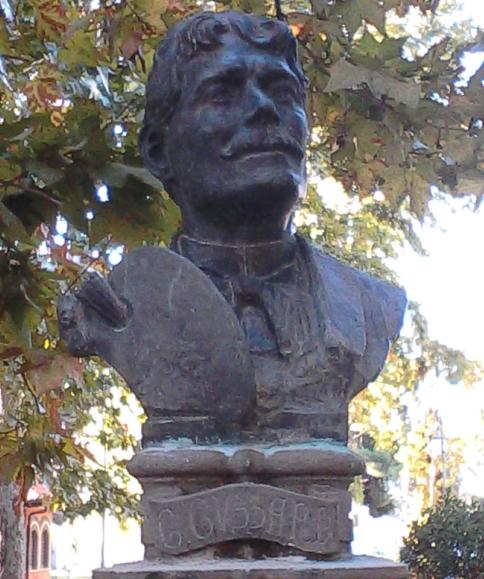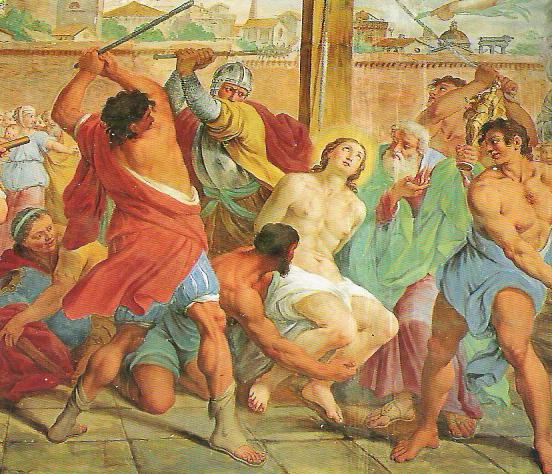|
Chiesa Madre, Adrano
The Chiesa Madre (Mother Church), dedicated to Maria Santissima Assunta (Holiest Mary of the Assumption) is the largest Roman Catholic church in Adrano, and located in center of town, adjacent to the Norman Castle of the town, in the region of Sicily, Italy. History and description A church at the site was first commissioned in the 11th century by the initial Norman conquerors, specifically Roger II of Sicily, who would have been building the church adjacent to his Norman castle. The site was named ''Piano della Cuba'', perhaps because it already housed a house of worship at this site. The layout of the present church is mainly due to works patronized by Duke Francesco II Moncada between 1572 and 1592. This led to the building of the nave with two aisles and two side chapels. In 1750 a dome was built, tiled on the outer surface with painted bricks. The façade is framed with dark lava stone pilasters. In the tympanum above the portal is a marble depiction of the Assumption of ... [...More Info...] [...Related Items...] OR: [Wikipedia] [Google] [Baidu] |
Adrano Duomo - Panoramio
Adrano (, scn, Ddirnò), ancient '' Adranon'', is a town and in the Metropolitan City of Catania on the east coast of Sicily. It is situated around northwest of Catania, which was also the capital of the province to which Adrano belonged, now a metropolitan city. It lies near the foot of Mount Etna, at the confluence of the Simeto and Salso rivers. It is the commercial center for a region where olives and citrus fruit are grown. Neighbouring towns include: Biancavilla, Bronte, Paternò, Randazzo, Santa Maria di Licodia and Centuripe. History Founding and pre-Christian era The settlement was founded by Dionysius the Elder around 400 BC, intending to strengthen Syracusan power in the region. He named the town ''Adranon'' in honour of Adranus. In 344 BC the troops of Timoleon fought the forces of the Syracusan commander Iketas of Leontini near Adrano. During the following years, Adrano was frequently harried by Campanian mercenaries, called the Mamertinians. ... [...More Info...] [...Related Items...] OR: [Wikipedia] [Google] [Baidu] |
Roman Catholic
Roman or Romans most often refers to: *Rome, the capital city of Italy *Ancient Rome, Roman civilization from 8th century BC to 5th century AD *Roman people, the people of ancient Rome *''Epistle to the Romans'', shortened to ''Romans'', a letter in the New Testament of the Christian Bible Roman or Romans may also refer to: Arts and entertainment Music *Romans (band), a Japanese pop group * ''Roman'' (album), by Sound Horizon, 2006 * ''Roman'' (EP), by Teen Top, 2011 *"Roman (My Dear Boy)", a 2004 single by Morning Musume Film and television *Film Roman, an American animation studio * ''Roman'' (film), a 2006 American suspense-horror film * ''Romans'' (2013 film), an Indian Malayalam comedy film * ''Romans'' (2017 film), a British drama film * ''The Romans'' (''Doctor Who''), a serial in British TV series People * Roman (given name), a given name, including a list of people and fictional characters * Roman (surname), including a list of people named Roman or Romans *Ῥωμα� ... [...More Info...] [...Related Items...] OR: [Wikipedia] [Google] [Baidu] |
Adrano
Adrano (, scn, Ddirnò), ancient '' Adranon'', is a town and in the Metropolitan City of Catania on the east coast of Sicily. It is situated around northwest of Catania, which was also the capital of the province to which Adrano belonged, now a metropolitan city. It lies near the foot of Mount Etna, at the confluence of the Simeto and Salso rivers. It is the commercial center for a region where olives and citrus fruit are grown. Neighbouring towns include: Biancavilla, Bronte, Paternò, Randazzo, Santa Maria di Licodia and Centuripe. History Founding and pre-Christian era The settlement was founded by Dionysius the Elder around 400 BC, intending to strengthen Syracusan power in the region. He named the town ''Adranon'' in honour of Adranus. In 344 BC the troops of Timoleon fought the forces of the Syracusan commander Iketas of Leontini near Adrano. During the following years, Adrano was frequently harried by Campanian mercenaries, called the Mamertinians. The ... [...More Info...] [...Related Items...] OR: [Wikipedia] [Google] [Baidu] |
Sicily
(man) it, Siciliana (woman) , population_note = , population_blank1_title = , population_blank1 = , demographics_type1 = Ethnicity , demographics1_footnotes = , demographics1_title1 = Sicilian , demographics1_info1 = 98% , demographics1_title2 = , demographics1_info2 = , demographics1_title3 = , demographics1_info3 = , timezone1 = CET , utc_offset1 = +1 , timezone1_DST = CEST , utc_offset1_DST = +2 , postal_code_type = , postal_code = , area_code_type = ISO 3166 code , area_code = IT-82 , blank_name_sec1 = GDP (nominal) , blank_info_sec1 = €89.2 billion (2018) , blank1_name_sec1 = GDP per capita , blank1_info_sec1 ... [...More Info...] [...Related Items...] OR: [Wikipedia] [Google] [Baidu] |
Roger II Of Sicily
Roger II ( it, Ruggero II; 22 December 1095 – 26 February 1154) was King of Sicily and Africa, son of Roger I of Sicily and successor to his brother Simon. He began his rule as Count of Sicily in 1105, became Duke of Apulia and Calabria in 1127, then King of Sicily in 1130 and King of Africa in 1148. By the time of his death at the age of 58, Roger had succeeded in uniting all the Norman conquests in Italy into one kingdom with a strong centralized government. Background By 999, Norman adventurers had arrived in southern Italy. By 1016, they were involved in the complex local politics, where Lombards were fighting against the Byzantine Empire. As mercenaries they fought the enemies of the Italian city-states, sometimes fighting for the Byzantines and sometimes against them, but in the following century they gradually became the rulers of the major polities south of Rome. Roger I ruled the County of Sicily at the time of the birth of his youngest son, Roger, at ... [...More Info...] [...Related Items...] OR: [Wikipedia] [Google] [Baidu] |
Carlo Sada
Carlo is a given name. It is an Italian form of Charles. It can refer to: *Carlo (name) * Monte Carlo *Carlingford, New South Wales, a suburb in north-west Sydney, New South Wales, Australia *A satirical song written by Dafydd Iwan about Prince Charles. *A former member of Dion and the Belmonts best known for his 1964 song, Ring A Ling. *Carlo (submachine gun), an improvised West Bank gun. * Carlo, a fictional character from Animal Crossing: Pocket Camp * It can be confused with Carlos * Carlo means “man” (from Germanic “karal”), “free man” (from Middle Low German “kerle”) and “warrior”, “army” (from Germanic “hari”). See also *Carl (name) *Carle (other) *Carlos (given name) Carlos is a masculine given name, and is the Portuguese and Spanish variant of the English name ''Charles'', from the Germanic ''Carl''. Notable people with the name include: Royalty *Carlos I of Portugal (1863–1908), second to last King of P ... {{disambig Itali ... [...More Info...] [...Related Items...] OR: [Wikipedia] [Google] [Baidu] |
Luis De Morales
Luis de Morales (1509 – 9 May 1586) was a Spanish painter active during the Spanish Renaissance in the 16th century. Known as "El Divino", most of his work was of religious subjects, including many representations of the Madonna and Child and the Passion. Influenced by Raphael Sanzio and the of Leonardo da Vinci, especially in his early work, he was called by his contemporaries "The Divine Morales" because of his skill and the shocking realism of his paintings, and because of the spirituality transmitted by all his work. His work has been divided by critics into two periods, an early stage marked by the influence of Florentine artists such as Michelangelo, and a more intense, more anatomically correct later stage with similarities to the works of German and Flemish Renaissance painters. The Prado Museum in Madrid holds around 22 paintings by Morales. Some of his works can also be seen at Salamanca's Cathedral and Museum in Plasencia and the Real Academia de Bellas Art ... [...More Info...] [...Related Items...] OR: [Wikipedia] [Google] [Baidu] |
Giuseppe Guzzardi
Giuseppe Guzzardi (December 8, 1845 in Adrano – September 14, 1914 in Florence) was an Italian painter. Biography Guzzardi was born in Adernò, now called Adrano. He first trained as a child with a local painter, Vincenzo Costa. His early work showed such promise that the comune awarded him a stipend to study in Florence, where he studied at the Academy of Fine Arts under Antonio Ciseri. In 1874, he first exhibited at the Florentine Promotrice. In 1876 at the Academy in Florence, he exhibited ''The Virgin on Golgotha'' (now in Sanctuary of Maria SS. Ausiliatrice of Adrano). In 1876 he exhibited at the Florentine Promotrice ''Rural Idyll'', which the Artistic Fellowship selected to be copied for distribution to its members. He was also in demand as a portraitist. In the 1880s, he was named honorary professor at the Academy in Florence. He returned to his hometown of Adrano in 1887, to bring help during a cholera epidemic. After the epidemic, he returned to Tuscany and pain ... [...More Info...] [...Related Items...] OR: [Wikipedia] [Google] [Baidu] |
Nicolò Politi
Nicolò Politi (3 August1117 - 17 August 1167) was an Italian Roman Catholic monk and hermit who joined the Basilians. Politi was born to nobles but fled to become a monk after his parents arranged his marriage when he was seventeen. He spent the next several decades in a mountain cave and would return to the Basilian convent each weekend for the sacraments before he returned to his cave. He was known for his miracles since his childhood and was venerated as a saint after his death despite his reclusive hermitage. He was canonized as a saint on 7 June 1507. Life Nicolò Politi was born in Adrano on 6 September 1117 as the sole child born to aged parents (Almidoro and Alpina) who were nobles. He received a secular and religious education befitting for a noble and was known for his piousness and his desire to often contemplate on the Passion of Jesus Christ. But Politi was drawn to the consecrated life and wanted to live a life for God alone; his parents decided to arrange ... [...More Info...] [...Related Items...] OR: [Wikipedia] [Google] [Baidu] |
Angelo La Naia
Angelo La Naia (November 14, 1884 – 16 June 1968) was an Italian painter. Biography La Naia was born in Adrano, in Sicily to a family of limited means living off farming. As a young man, he was encouraged to pursue painting by Nicolò Lauricella and Giuseppe Guzzardi. He was a pupil for a time under Guzzardi, and at a local school of art. He moved to Florence. There he was to live with two orphan sisters; one of them, Emilia Bellati, would inspire many of his works. He would marry her only on 14 June 1968, two days before his death. He was made instructor of design at the Accademia delle Belle Arti di Firenze of Florence. During his productive career, he pursued both painting, sculpture and architecture. Among his works are: entry on artist. * Funeral Monument to mother Maria Rosa Costanzo and cousin Neri Nicolò * Bronze bust of Giusep ... [...More Info...] [...Related Items...] OR: [Wikipedia] [Google] [Baidu] |
Pietro Paolo Vasta
Piero or Pietro Paolo Vasta (31 July 1697 - 28 November 1760) was an Italian painter of the Baroque period, mainly active in the east of his native Sicily. Biography He was born in Acireale. and initially trained with both the painters Giacinto Platania and Antonio Filocamo, who directed the fresco decoration in 1711 of the Cathedral of Acireale. At the age of 17 years, he moved to Rome, where he was mentored putatively by Luigi Garzi. Vasta was apparently admitted to the Accademia di San Luca in Rome; however, little of his work here is known. He returned to Acireale in 1731. One of his first works were frescoes for the church of San Sebastiano, where he could be compared to Venerando Costanzo, who was also painting frescoes contemporaneously. He would next add frescoes depicting scenes from the Old Testament to the Cathedral, here competing with Costanzo for the commission. He also painted a large ''Marriage at Cana'' canvas for the church. Among the churches in Acireale co ... [...More Info...] [...Related Items...] OR: [Wikipedia] [Google] [Baidu] |
Salvo Di Antonio
A salvo is the simultaneous discharge of artillery or firearms including the firing of guns either to hit a target or to perform a salute. As a tactic in warfare, the intent is to cripple an enemy in one blow and prevent them from fighting back. Overview Troops armed with muzzleloaders required time to refill their arms with gunpowder and shot. Gun drills were designed to enable an almost continuous rain of fire on the enemy by lining troops into ranks, allowing one rank to fire a salvo, or volley, while the other ranks prepared their guns for firing. The term is commonly used to describe the firing of broadsides by warships, especially battleships. During fleet engagements in the days of sail, from 17th century until the 19th century, ships of the line were maneuvered with the objective of bringing the greatest possible number of cannon to bear on the enemy and to discharge them in a salvo, causing enough damage and confusion as to allow time for the cannon to be ... [...More Info...] [...Related Items...] OR: [Wikipedia] [Google] [Baidu] |





